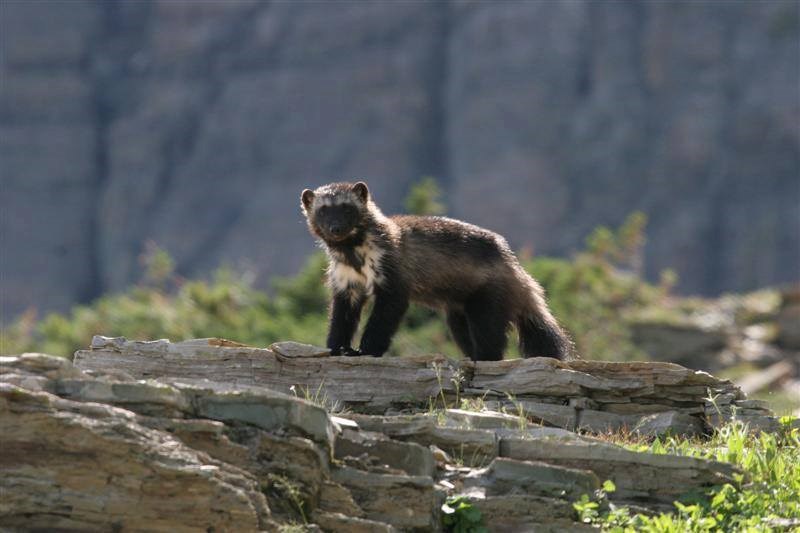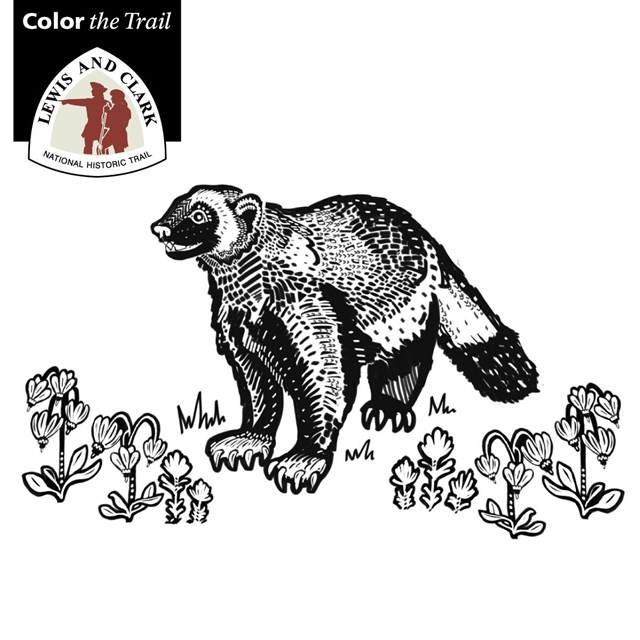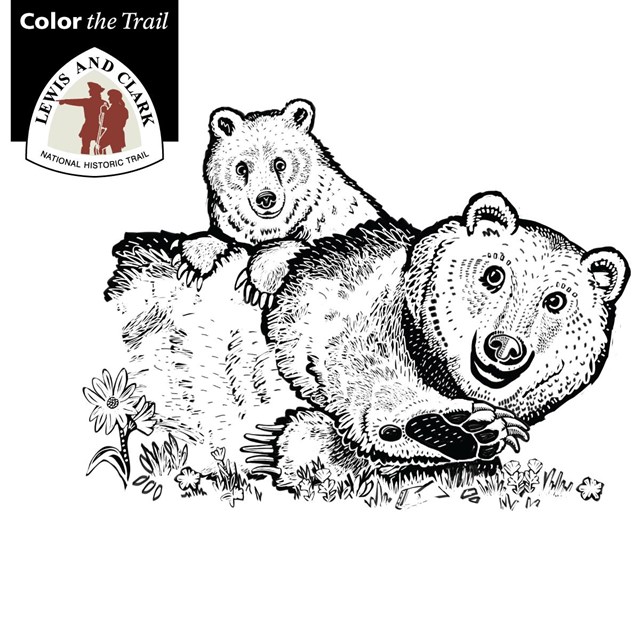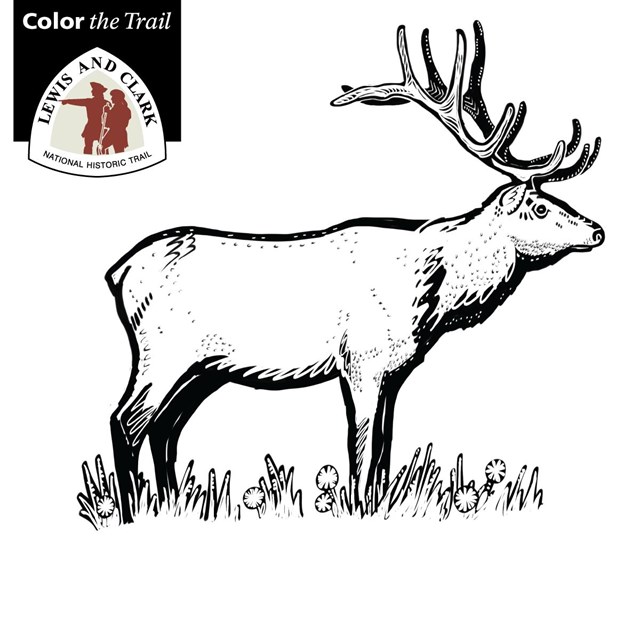Last updated: October 15, 2021
Article
Captain Meriwether Lewis meets a Wolverine

NPS/Public Domain
On June 14, 1805, as the Lewis and Clark Expedition was making its way across the unfamiliar land of present day Montana, Captain Meriwether Lewis met with an animal that is nearly as mysterious to us today as it was to Lewis upon first seeing it.
Lewis wrote, “Its colour was a brownish yellow; it was standing near it's burrow, and when I approached it thus nearly, it crouched itself down like a cat looking immediately at me as if it designed to spring on me.”
This was an animal Meriwether Lewis had never seen before. He first identified it as a wolf, but his description doesn't quite match. What about a badger? Badgers and wolverines are similar species and are even in the same family, the Mustelidae family, which includes weasels and otters. Lewis also referred to the animal as a “tyger cat" which could be a clue. Badgers are black and white, while wolverines have more of a color palette to their fur. And then there is the location of the sighting to consider. While badgers can be found burrowing out on the scorching heat of the great plains, wolverines require persistent winter snowpack to make their winter dens and must live in and near the alpine habitats of Canada to the northern Rocky Mountain region. Plus, the expedition had already encountered and even hunted a badger back at Camp Dubois in 1804. No, in this harsh landscape unfamiliar to Lewis, he had seen something entirely different: a wolverine.
August 1805 near Lemhi Pass, Lewis had his only other encounter with this animal in an incident that hints at the animal's notorious tenacity. Lewis wrote, “We saw an animal which we took to be of the fox kind, as large or reather larger than the small wolf of the plains coyote—its colours were a curious mixture of black, redish brown and yellow. Drewyer [interpreter and hunter George Drouillard] shot at him about 130 yards and knocked him down, but he recovered and got out of our reach.”
Present day Montana, where Lewis had his encounter with this mystery mammal, is today the last stronghold for wolverine populations in the lower 48. Each wolverine may have an enormous territory and may range for hundreds of miles in search of food and mates. And so, this iconic, mysterious, infamously tough animal of the harshest climes finds itself vulnerable to habitat disturbance, habitat fragmentation, trapping, and climate change. At just 50 wolverines, the population at Glacier National Park on the Montana Canada border is thought to be the most dense concentration of wolverines in the contiguous U.S.
Learn more about wolverines. Visit Yellowstone National Park's Wolverine Page .
Make some wolverine appreciation art! Download and print the wolverine coloring page below.



